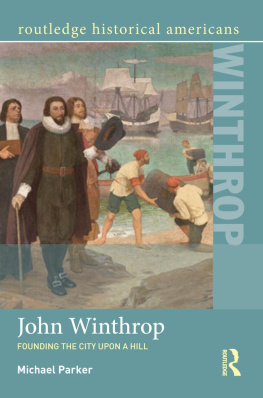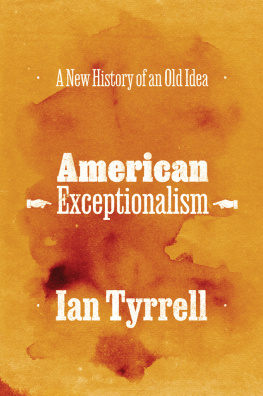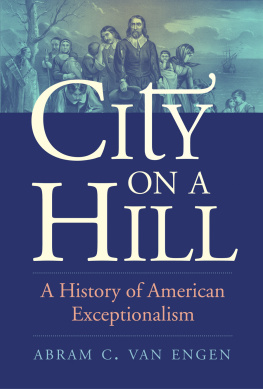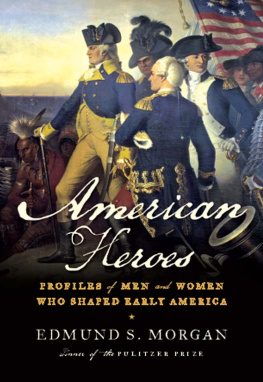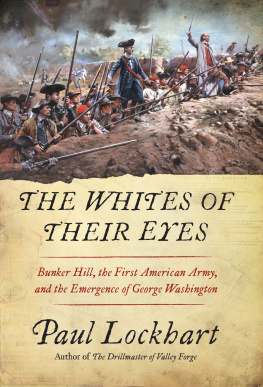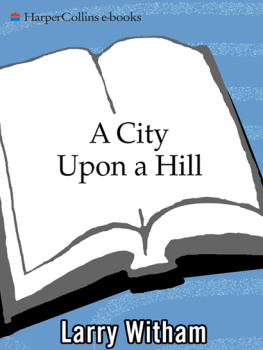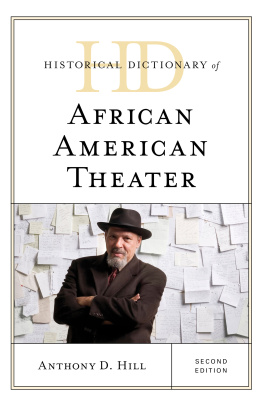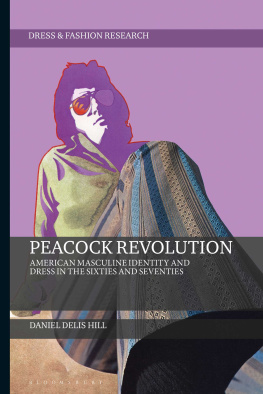
F IGURE John Winthrop, A Modell of Christian Charity, p. 39: for wee must consider that wee shall be as a citty upon a hill, the eies of all people are uppon us; soe that if wee shall deale falsely with our god can be made out in the last four lines.
John Winthrop, A Model of Christian Charity, 1630; from BV Winthrop, John; image #79597d, New-York Historical Society.
AS A CITY
ON A HILL
The Story of Americas Most
Famous Lay Sermon
Daniel T. Rodgers
PRINCETON UNIVERSITY PRESS
Princeton and Oxford
Copyright 2018 by Princeton University Press
Published by Princeton University Press
41 William Street, Princeton, New Jersey 08540
6 Oxford Street, Woodstock, Oxfordshire OX20 1TR
press.princeton.edu
All Rights Reserved
LCCN 2018942281
ISBN 968-0-691-18159-2
British Library Cataloging-in-Publication Data is available
Editorial: Brigitta van Rheinberg and Amanda Peery
Production Editorial: Debbie Tegarden
Jacket design: Emily Weigel
Jacket image: A modell of [Chris]tian charity: Written on board [the] Arbella, on [the] Atlantic Ocean, John Winthrop, 1630. Courtesy of the New-York Historical Society
Production: Jacquie Poirier
Publicity: James Schneider
This book has been composed in Adobe Caslon Pro and Arno Pro
Printed on acid-free paper.
Printed in the United States of America
10 9 8 7 6 5 4 3 2 1
To the memory of four of my teachers:
William G. McLoughlin
George W. Morgan
Edmund S. Morgan
C. Vann Woodward
Contents
INTRODUCTION
The Most Famous Lay Sermon in All of American History
EPILOGUE
Disembarking from the Arbella
APPENDIX
John Winthrop, A Model of Christian Charity: A Modern Transcription
INTRODUCTION
The Most Famous Lay Sermon in All of American History
F OR THE LAST SIXTY YEARS , a story has been told about the origins of America. Like many historical stories, it is told as a parable: deep and timeless continuities flow out of the specifics of time and place. It is an uplifting story and a haunting one. And it is at least half wrong.
The setting is a vessel in mid-passage on the Atlantic Ocean. The year is 1630. Fast-forward another decade and a half, and a revolution among those passengers countrymen would turn the political and religious order of absolutist England upside down. But the voyagers aboard the Arbella were seeking out a new place of settlement in part because they did not believe such a striking break in human affairs was possible. Balancing hope against despair, they were headed instead for North America.
Somewhere in that mid-ocean passage, their elected governor, John Winthrop, confident and commanding in his presence, rose to deliver an address in which he outlined the purpose of their undertaking. A Model of Christian Charity Winthrops text would come to be titled. A lay sermon, historians since the middle of the In it Winthrop confirmed these new Americans commitment to a new life of obedience, love, and mutual affections. He reminded them that they sailed not on their own whim or private ambitions but under a covenant with God: a commission as clear as Gods covenant with biblical Israel. Their responsibilities to each other were intense, and the risks of failure were, literally, terrifying. But in return, Winthrop offered a promise. If they should keep true to their purposes they would not only overcome the hardships the future held for them in New England. The eyes of all people would be upon them. They would be made a praise and glory. And they would be as a city upon a hill to the world.
This story of John Winthrops Model of Christian Charity has been repeated over and over in the history books and in the civic creed of Americans. It has been celebrated not only for its elements of dramadangerous ocean passage, inspired words, and exalted sense of purposebut as the origin story of the nation that the United States was to become. Ronald Reagan made a sentence-long extract from Winthrops Modelwe shall be as a city upon a hill; the eyes of all people are upon usinto the signature line of his presidency. Preached to a little band of settlers crowded onto the tiny ship bearing them across the Atlantic, as Reagan saw the event in his minds eye, the Model set the vision to which our people always have held fast since our first days as a nationthat they were destined from their origins to be a beacon of hope and liberty to the world, a model to all nations. It was right here, in the waters around us, where the American experiment began, Barack Obama told the graduating class at the University of Massachusetts at Boston in 2006 in the same vein. It was right here that the earliest settlers dreamed of building a City upon a Hill and the world watched waiting to see if this improbable idea called America would succeed.
There are powerful reasons behind these judgments. The sense of national mission that marks American civic-political culture, its confidence, and its fervent sense of exception from the lot of all other nations: From what source could these have flowed except from that first, origin moment, when a sense of acting on a special covenant with God became fused with the experience of America? Winthrops we shall be as a city upon a hill seems to hold in its grasp what the future would bring for the United States: its magnet status for a world of immigrants, its economic ascendancy, and its rise to world leadership. The nations moralism, its Wilsonian idealism, the endurance of its religious cultures, and its certainty that it had been granted a unique and special part in the unrolling of human history all seem presaged in Winthrops text. Critics see less attractive traits of American national culture embedded there as well: the self-righteousness with which the Americans would roll across the continent and project their power throughout the world as if they and God were working hand in hand to expand the special promises of America. All this has been traced to the Puritan origins of America and the mission statement that John Winthrop wrote for it.
No serious observer claims that A Model of Christian Charity holds all the elements of the nation the United States would become. There would be trial and error in the American future and furious contention as well. But since the middle of the twentieth century Winthrops Model has seemed to hold in embryo the nations most powerful and distinctive threads. To begin at the American beginning is to begin with a text in its mid-oceanic setting, just before its words and its promise to be a city upon a hill would begin to be etched on the land.
Most of this is a modern invention and much of it is wrong. None of those who voyaged with John Winthrop to the Puritan settlement in New England left any record that they heard Winthrops words in mid-passage. Most likely A Model of Christian Charity was never delivered as a sermon at all. Although copies of Winthrops text circulated in England during his lifetime, by the end of the seventeenth century they had all literally vanished from memory. One of those long-forgotten copies was discovered in a bundle of old sermons and documents of New England history in 1809, but it was not put into print until 1838. And then it lapsed from sight again almost as completely. An occasional nineteenth-century historian mentioned Winthrops Model of Christian Charity, but most did not and none pulled itor its city upon a hill lineout of the mass of other colonial American documents as especially important. Through the 1970s mention of A Model of Christian Charity was a hit-or-miss affair in standard histories of the United States. It was only in the decade of the 1980s, three hundred and fifty years after its writing, that the incongruously parallel work of a conservative Cold War president, Ronald Reagan, and a radical, immigrant literary scholar, Sacvan Bercovitch, combined to make Winthrops text and metaphor famous. A Model of Christian Charity is old, but its foundational status is a twentieth-century invention.
Next page


